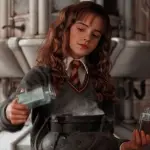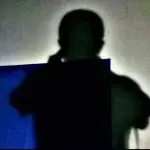Upon its release in 2019, "Aladdin" garnered widespread acclaim, leaving audiences curious about the collaboration between director Guy Ritchie of "Lock, Stock and Two Smoking Barrels" fame and actor Will Smith from "Ali."

But before we delve into that, let's first revisit the fiery anthem "Speechless" from "Aladdin":
Heading the production design for "Aladdin" is the renowned Gemma Jackson, also known for her work as the production designer for the "Game of Thrones" series.


Compared to previous live-action remakes like "Cinderella," "Beauty and the Beast," and "Dumbo," Disney's adaptation of "Aladdin" stands out. Now, let's delve into the architectural and spatial design within the film.


Agrabah

Filmed primarily in the UK and Jordan, "Aladdin" showcases the fictional kingdom of Agrabah through its bustling marketplace, grand palaces, and a new geographical location. Agrabah, set in a Middle Eastern port city with palaces facing the sea and dunes in the backdrop, resembles Namibia in some aspects. Its prosperity from trade brings together a diverse array of precious goods and exotic cultures, highlighting its strong connections with the world.

Unlike the 1992 animated version, the live-action film demands a three-dimensional portrayal of the city. Detailed construction and representation of the city's roads, textures, city center, and its relation to the surrounding geography were crucial.

According to Gemma Jackson, the new city's geography and spatial design contribute to Jasmine's cosmopolitan image and lay the groundwork for the storyline involving introducing the new character, Prince Anders, who travels from the cold Skanland seeking marriage.

Aerial shots were employed to capture the spectacle of the parade. The procession amidst the city raised smoke, while rainbows reflected on the water's surface, indirectly echoing vibrant tropical celebrations.

Interestingly, the saturation of the desert city scenes could be higher in distant shots. Yet, with scattered greenery and subtle colors reflected in the architectural domes, along with the rainbow's touch, the vitality of this affluent city is vividly portrayed (many beautiful scenes flash by quickly in the film, but slowing down reveals each frame to be exquisite).


Agrabah Marketplace
The film opens with dynamic shots as Aladdin and Jasmine, disguised, navigate the labyrinthine streets of Agrabah, pursued by palace guards.


Throughout the marketplace chase sequence, various camera angles, including close-ups, wide shots, and overhead views, provide audiences with a comprehensive understanding of the intricate space. Gemma Jackson mentioned that every building and alley in the marketplace was meticulously studied and scrutinized through physical models.

In terms of detail, from constructing actual dye pits to intersecting alleys, Gemma Jackson aimed to include as many interesting sights as possible, immersing viewers in a bustling marketplace teeming with life. People lead livestock in the market. Crossing courtyards, some dry crops are being dried... The volume of information is immense, overwhelming the senses. On one side, we witness the protagonists' lightning-fast chase scenes; on the other, the city's bustling morning market creates a stark contrast that adds a lot of fun.
Sultan's Palace

After several considerations for the Sultan's palace, the crew settled on a temple in Myanmar made of wood and painted gold, but it appeared to have been neglected due to its age. Most buildings in the film were based on this temple but on a much larger scale, and all painted gold, giving them a Byzantine style. When all the gold reflects off each other, the atmosphere inside the palace immediately changes.

The interior decor of the palace is a mishmash of styles. The crew incorporated various elements, including Turkish and Persian paintings, blankets, İznik ceramics, and many classical Victorian-style paintings... Everywhere, these exquisite artworks abound. Even more exaggeratedly, a real 1000-year-old olive tree in the center of the palace courtyard immediately brings a tropical, solid atmosphere.
Aladdin's Home

In the final scene of the chase scene, after evading the palace guards, Aladdin leads Jasmine into his home. After Aladdin pulls a rope, the seemingly dilapidated rooftop reveals a canopy adorned with hand-painted designs and neatly arranged tableware underneath. Following the wooden steps along the wall, a damaged balcony offers the best view. Jasmine watches the beautiful city below in the wind, the charming scenery outside the window broadening the princess's horizons, sparking a fondness.

The director aimed to create an image of Aladdin as a "Street rat with a heart of gold" filled with imagination and creativity, not just a simple ragged boy. He made full use of the high tower's space and the surrounding ascending walls, designing scenes of dialogue and song to enrich the character through spatial narrative.
Other Intriguing Details
After depicting the daytime city scenes, Disney takes us on a journey through the night. The cold moonlight creates a serene desert city night, while every household's starlight and lights make the city particularly lovely.

Returning to Gemma Jackson, she won two Emmy Awards for her work on the "Game of Thrones" series and the miniseries "John Adams." She earned an Oscar nomination for Best Art Direction for the film "Finding Neverland." Gemma Jackson's collaboration with director Guy Ritchie isn't new; they previously worked together on "King Arthur: Legend of the Sword" in 2017.

Gemma Jackson's works often feature extraordinary color combinations. She draws inspiration from various cultures, such as the textures and colors of different regions in India and early Italian Renaissance paintings.
Back to "Aladdin," this film has many other beautiful aspects, such as the clever monkey Abu, the grand parade scene of "Prince Ali," and Aladdin's awkward dance scene at the ball.







































Share your thoughts!
Be the first to start the conversation.